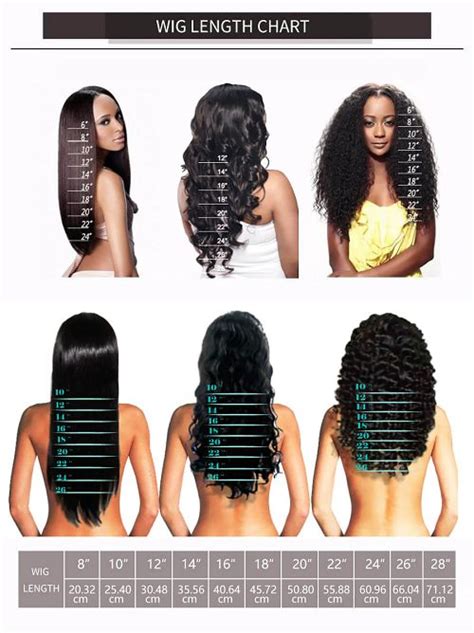Introduction
In today’s beauty landscape, natural hair wigs have emerged as a revolutionary solution for individuals seeking to embrace their unique hair texture, enhance their appearance, and experiment with diverse hairstyles. They offer an incredible array of benefits, from shielding natural hair from damage to providing instant volume and versatility. This comprehensive guide will delve into the world of natural hair wigs, empowering you with the knowledge to find the perfect fit and achieve your desired aesthetic.

Types of Natural Hair Wigs
Natural hair wigs come in a variety of types, each designed to meet specific needs and preferences.
Human Hair Wigs
-
Advantages:
- Natural appearance and feel
- Can be styled, colored, and heat-treated
- Durable and long-lasting
-
Disadvantages:
- More expensive than synthetic wigs
- Require more care and maintenance
Synthetic Hair Wigs
-
Advantages:
- Affordable
- Wide range of colors and styles
- Easy to care for and maintain
-
Disadvantages:
- Can appear less natural
- Limited styling options
- Less durable than human hair wigs
Lace Front Wigs
Lace front wigs feature a thin lace base that blends seamlessly with the wearer’s skin, creating the illusion of natural hair growth. They provide a realistic hairline and allow for versatile styling.
Full Lace Wigs
Full lace wigs offer the most natural appearance, as they are entirely made of lace. They can be parted and styled in any direction, providing maximum versatility.
Choosing the Right Natural Hair Wig
Selecting the ideal natural hair wig involves considering several factors:
- Hair Texture: Match the wig’s texture to your own hair to ensure a natural blend.
- Hair Color: Choose a color that complements your skin tone and desired look.
- Cap Size: Determine the circumference of your head to find a wig that fits comfortably.
- Wig Style: Explore different wig styles to match your face shape and personal preferences.
Benefits of Natural Hair Wigs
- Protect Natural Hair: Wigs can shield your natural hair from damage caused by styling, heat, and chemicals.
- Instant Volume and Length: Add volume and length to your hair without compromising its health.
- Versatile Styling Options: Experiment with various hairstyles, from sleek and sophisticated to playful and experimental.
- Scalp Protection: Wigs can provide coverage for sensitive scalps or conceal hair loss.
- Boost Confidence: Embrace your desired hair texture and style, enhancing your self-esteem.
How to Care for Natural Hair Wigs
- Wash Regularly: Wash your wig every 1-2 weeks, using a mild shampoo and conditioner designed for hair extensions.
- Avoid Heat Styling: Limit the use of heat tools on your wig to avoid damage.
- Detangle Gently: Use a wide-tooth comb or brush to detangle your wig, starting from the ends and working your way up.
- Store Properly: When not in use, store your wig on a wig stand or head form to maintain its shape.
- Professional Care: Consider visiting a salon or wig specialist for deep cleaning, maintenance, and styling advice.
Troubleshooting Common Wig Problems
- Tangling: Avoid brushing your wig dry, as this can cause tangles. Use a detangling spray or serum to help remove knots.
- Shedding: Some shedding is normal, especially when the wig is new. If the shedding is excessive, it may be a sign of poor-quality hair.
- Frizzy Hair: Apply a serum or oil to the wig to reduce frizz and enhance shine.
- Unnatural Look: Ensure the wig is professionally fitted and styled to achieve a natural and seamless blend.
Trends in Natural Hair Wigs
The natural hair wig market is constantly evolving with innovative designs and technologies.
- African American Hair Wigs: Embracing natural textures and styles, these wigs offer versatility for individuals with relaxed, curly, or coily hair.
- Wig Customization: Many wig makers offer customization services, allowing you to design your own wig based on your desired specifications.
- Heat-Resistant Fiber Wigs: Heat-resistant wigs provide more styling options and can withstand higher temperatures.
- Synthetic Wigs with Human Hair Blends: Hybrid wigs combine the natural appearance of human hair with the affordability and ease of care of synthetic hair.
Frequently Asked Questions (FAQs)
- Q: How long do natural hair wigs last?
- A: The lifespan of a wig depends on factors such as hair quality, frequency of use, and care. With proper maintenance, a high-quality natural hair wig can last up to 2 years or more.
- Q: Can I color a natural hair wig?
- A: Human hair wigs can be colored professionally, but it is not recommended to color synthetic hair wigs.
- Q: How often should I wash my natural hair wig?
- A: Wash your wig every 1-2 weeks, depending on usage and styling products used.
- Q: How can I make my natural hair wig look more natural?
- A: Ensure the wig is properly fitted, use a wig cap to create a smooth base, and blend the wig’s edges with your own hair.
- Q: What is the best way to store my natural hair wig?
- A: Store your wig on a wig stand or head form to maintain its shape and avoid tangling.
- Q: Where can I find a professional to fit and style my wig?
- A: Contact a salon or wig specialist who specializes in hair extension and wig services.
Conclusion
Natural hair wigs offer a transformative solution for individuals seeking to embrace their individuality, protect their hair, and explore diverse hairstyles. Whether you desire a realistic lace front wig or a voluminous synthetic wig, there is a natural hair wig designed to meet your specific needs and preferences. By understanding the types, benefits, and proper care of natural hair wigs, you can empower yourself to achieve the natural, confident, and stylish look you desire.
